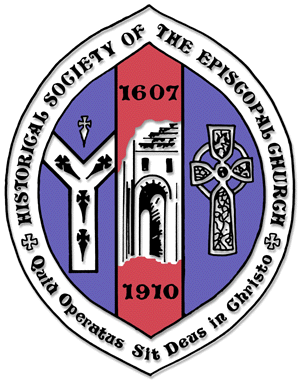An introduction to ...
Church Reviews
in the journal Anglican and Episcopal History

Link to the Historical Society of the Episcopal Church and its journal Anglican and Episcopal History
Guidelines
A church review is a snapshot of a worship service, with the reviewer's evaluation. The snapshot includes the reviewer's experience of the following:
- (a) the physical context of the worship, such as the architecture of the building, the interior use of space, and ornamentation;
- (b) the liturgical order and character, including the kind of service, its length, ceremonial patterns, the style of leadership, and congregational participation;
- (c) music;
- (d) the character of the congregation, such as its socio-economic composition, the numbers attending, and rough percentages by age, sex, and race;
- (e) the sermon, including its length, purpose, quality, and theological tendency, and the text addressed; and
- (f) the social setting and history of the church and the community, so far as these help the reader understand the service.
As part of the evaluation, the reviewer should offer an account of the significance of the service reviewed, which might be, among other things, liturgical, theological, sociological, moral, or aesthetic. The reviewer may also describe her or his personal experience of the worship, and of the hospitality of the congregation. Many variations are possible on this outline; no two reviewers will focus on precisely the same aspects of worship.
The church review section of Anglican and Episcopal History focuses on churches in the Anglican tradition, but roughly one review in four features a service in another tradition. In respect of the Anglican communion, we are interested in the diversity of its worship, and we therefore welcome reviews of historic churches and new ones, neighborhood churches and inner-city ones and rural ones, American churches and churches in other parts of the world, churches with unusual liturgies and churches with typical ones, and so on. The only church which a reviewer should not choose is one in which he or she has or might be seen to have a personal interest, such as his or her own home church, or any other church where the objectivity of his or her approach might be impaired.
The editorial board intends the reviews to serve not only as historical resources for the scholars of the future but also as interesting articles for Anglicans and others to read in the 2000s.
A typical review will run from five to eight typed pages (1250 to 2000 words). It must be written entirely in the third person. It should include no names of living persons. It may include both humor and criticism, but experience has shown that both must be carefully handled. The review should have a title; and the reviewer should try to select a title that can arouse the interest of readers. Sometimes the title is drawn from the body of the review. For example, one reviewer quoted John Updike's poem on Upperville, Virginia; and the first line of that poem ("In Upperville, the upper crust") became the title, for it expressed a main idea of the review, that this was an upper-crust Episcopal parish.
We urge first-time church reviewers to read at least half a dozen reviews from back issues of Anglican and Episcopal History before submitting one of their own.
Which churches have already been reviewed? Anglican and Episcopal History prints an annual index of reviews; and prospective contributors are invited to check by writing the church review editor directly at the address below. In any event, we have sometimes run two reviews of the same church, where both were worth reading!
Reviews should be sent electronically as a WordPerfect or Microsoft Word file, either by email attachment or on a disk. Reviews are subject to editing, and may be returned for revisions. Contributors can assist the process immensely if they will read and follow these instructions.
The church review editor is :
Alan L. Hayes alan.hayes@utoronto.ca
Wycliffe College, 5 Hoskin Avenue, Toronto, Ontario M5S 1H7 Canada